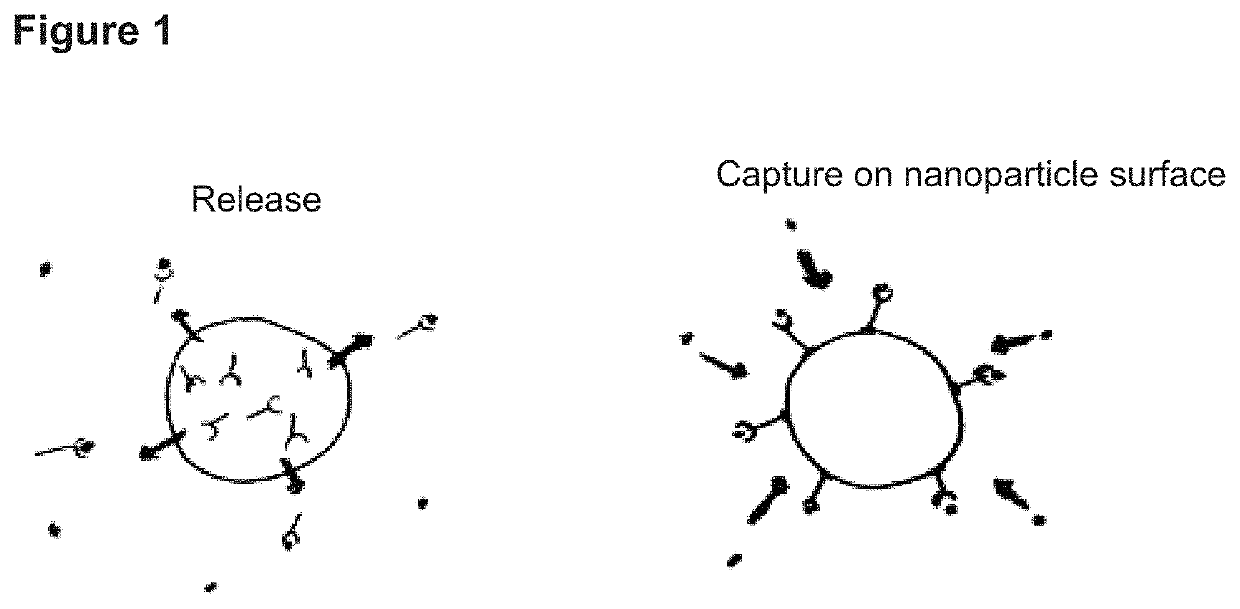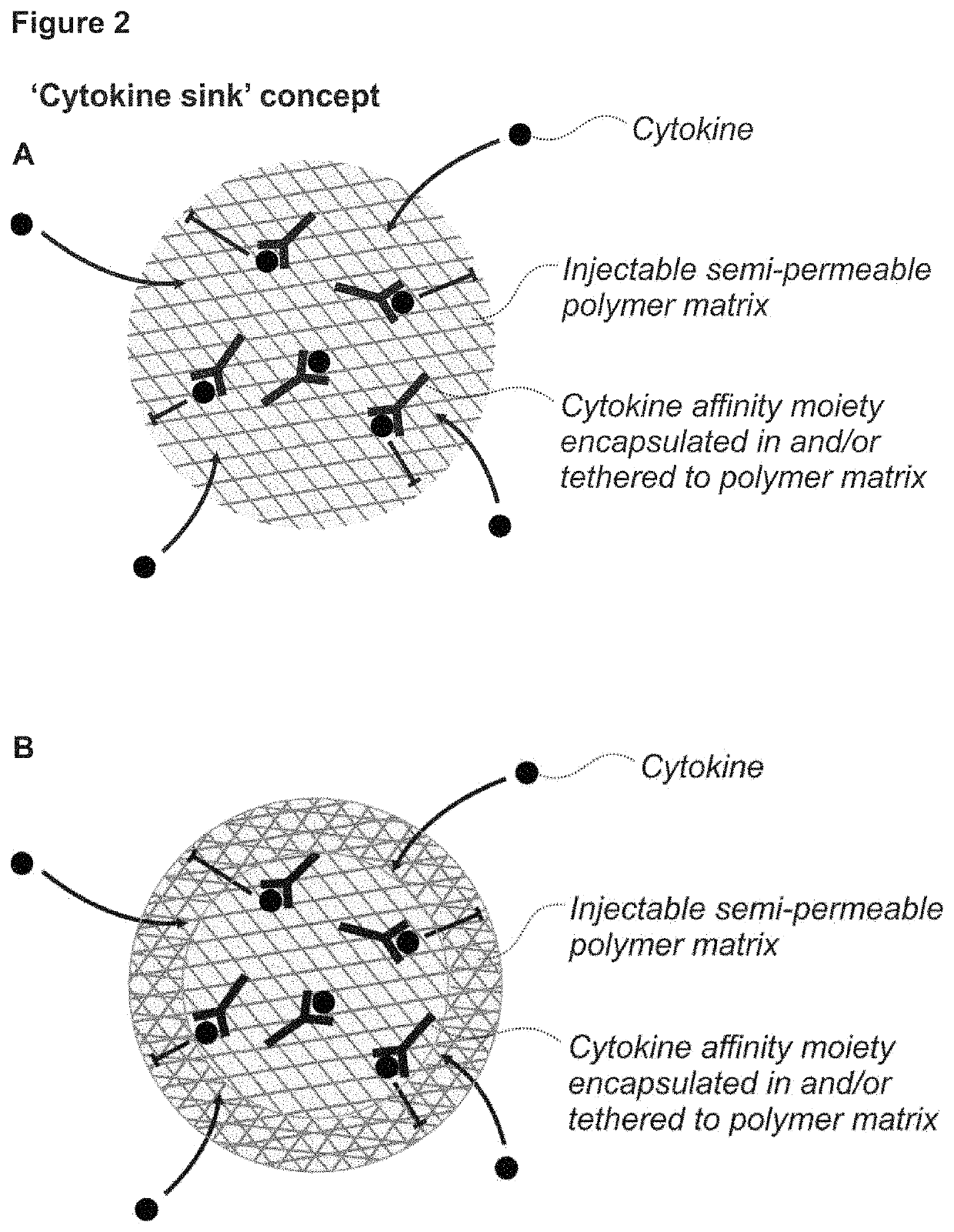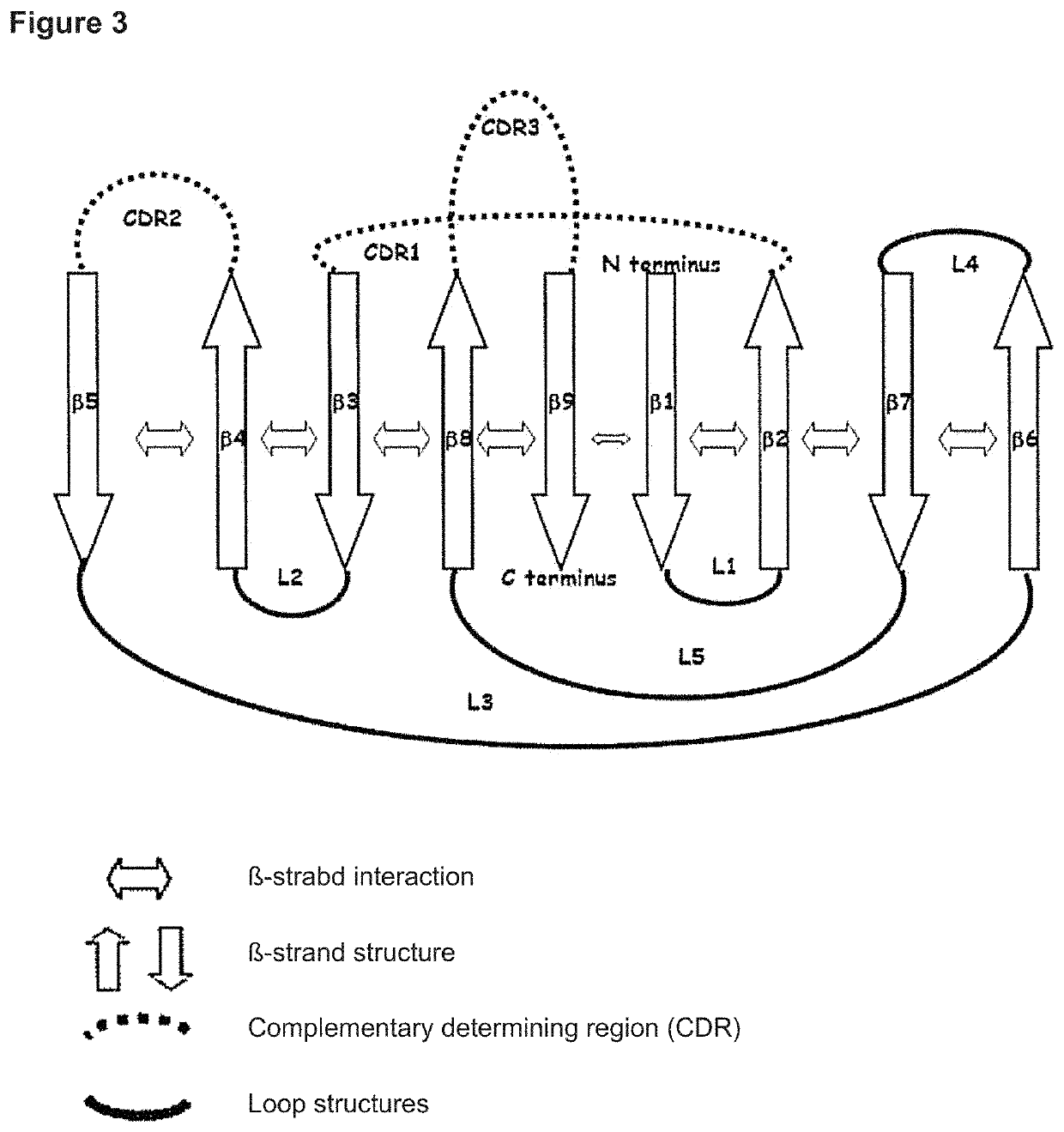Porous affinity hydrogel particles for reducing the bioavailability of selected biological molecules
a hydrogel particle and bioavailability technology, applied in the field of hydrogel particles, can solve the problems of limited efficacy of therapies, largely ineffective bolus injections at the site of inflammation, and still far from optimal
- Summary
- Abstract
- Description
- Claims
- Application Information
AI Technical Summary
Benefits of technology
Problems solved by technology
Method used
Image
Examples
example 1
[0113]The capacity of hydrogel conjugated VHHs to work as cytokine sinks over a period of various weeks requires that the conjugated VHHs remain biologically active for such a long period in the body. To test the stability of the VHHs in the body we injected mice with a bifunctional VHH (bihead) that simultaneously binds to hydroxyapatite in bone and to the growth factor BMP7.
Materials and Methods
Library Construction and Selection of VHH Targeting BMP7
[0114]All immunizations were approved by the Utrecht University ethical committee for animal experimentation. Two llamas were immunized with recombinant human BMP7 (R&D systems, #354-BP / CF). The antigens were mixed with the adjuvant Stimune (CEDI Diagnostics, Lelystad, the Netherlands) and injected intramuscularly at days 0, 14, 28 and 35. At day 44, peripheral blood lymphocytes were isolated for RNA extraction and library construction. The VHH phage display libraries were generated as previously described [1-3] and transferred to Esch...
example 2
Materials
[0142]Dextran (Dex; MW 15 to 25 kg / mol-Mn 16 kg / mol; lyophilized before use), 4-nitrophenyl chloroformate (PNC; sublimated before use), LiCl (dried at 110° C. before use), tyramine (TA) anhydrous pyridine, anhydrous N,N-dimethylformamide (DMF), trifluoroacetic acid (TFA), sodium hydroxide (NaOH), N-Boc-1,4-butanediamine (NH2-Boc), sodium bicarbonate (NaHCO3), biotin-atto565, biotin-4-fluorescein (biotin-FITC), 6-aminofluorescein, horseradish peroxidase (HRP, type VI), hydrogen peroxide (H2O2; with inhibitor), fetal bovine serum (FBS), calcein AM, ethidium homodimer-1 (EthD-1), buffered formalin, Triton X-100, and all other solvents were purchased from Sigma-Aldrich. Succinimidyl 6-(biotinamido)hexanoate (biotin-LC-NHS) was purchase from ApexBio. N-hydroxysuccinimide-desthiobiotin (EZ-Link NHS-desthiobiotin) and 4′,6-diamidino-2-phenylindole (DAPI) were purchased from Thermo Scientific. Phosphate-buffered saline (PBS) was purchased from Lonza. Minimal Essential Medium a with...
example 3
Permeability
[0160]The permeability of the hydrogel networks was tested using FITC-conjugated dextran with molecular weights of 20, 40, 70, 150, 500 and 2000 kDa (Sigma-Aldrich) and immunoglobulin G (IgG, 150 kDa, Sigma-Aldrich). Confocal cross-sections were made and the fluorescence intensity in the center of the gel was compared with the fluorescence intensity of the background using a custom made Matlab script. A minimum of 50 gels per condition were analyzed.
[0161]Analysis showed that DexHA-TA capsules were permeable for all FITC conjugates up to 2000 kDa and IgG (FIG. 13) although diffusion is approximately 50% delayed for larger molecules. This suggests that DexHA-TA based micro hydrogels are permeable, and most likely permeable to almost all relevant molecules in vivo, including large proteins but diffusion might be hampered. Quantification of IgG penetration in DexHA-TA was impossible due to IgG precipitation in the core of the gel. The PEG-TA capsules, however, were only per...
PUM
| Property | Measurement | Unit |
|---|---|---|
| diameter | aaaaa | aaaaa |
| hydrodynamic radius | aaaaa | aaaaa |
| hydrodynamic radius | aaaaa | aaaaa |
Abstract
Description
Claims
Application Information
 Login to View More
Login to View More - R&D
- Intellectual Property
- Life Sciences
- Materials
- Tech Scout
- Unparalleled Data Quality
- Higher Quality Content
- 60% Fewer Hallucinations
Browse by: Latest US Patents, China's latest patents, Technical Efficacy Thesaurus, Application Domain, Technology Topic, Popular Technical Reports.
© 2025 PatSnap. All rights reserved.Legal|Privacy policy|Modern Slavery Act Transparency Statement|Sitemap|About US| Contact US: help@patsnap.com



